First: draw the mold map
Before drawing the final assembly drawing of the mold, the process drawing should be drawn up, and it should meet the requirements of the workpiece drawing and process data. The size guaranteed by the next process shall be marked with the words "process size" on the drawing. If, after molding, no other machining is performed except for repairing burrs, the process drawing is exactly the same as the workpiece drawing.
It is best to mark the part number, name, material, material shrinkage, drawing ratio, etc. under the process diagram. Usually the process drawing is on the mold assembly drawing.
Draw the final assembly drawing as much as possible using the 1: 1 ratio. The cavity is drawn first, and the main view and other views are drawn simultaneously.
The die assembly drawing should include the following:
Mold forming part structure
Structure of pouring system and exhaust system.
Parting surface and parting method.
Shape structure and all connecting parts, positioning and guide parts.
Mark the cavity height dimension (not required, as required) and the overall size of the mold.
Auxiliary tools (tools for removing parts and molds, calibration tools, etc.).
Compile all part numbers in sequence and fill in the detailed list.
Mark the technical requirements and instructions for use.
Technical requirements of the assembly drawing of the mold:
For the performance requirements of certain systems of the mold. For example, assembly requirements for the ejection system and slider core pulling structure.
Requirements for mold assembly process. For example, after the mold is assembled, the bonding gap of the bonding surface of the parting surface should not be greater than the parallelism requirements of 0.05 mm above and below the mold, and the size determined by the assembly and the requirements for this size are pointed out.
The use of mold, assembly and disassembly method.
Anti-oxidation treatment, mold number, lettering, marking, oil seal, storage and other requirements.
Relevant requirements for trial testing and inspection.
The order of disassembling and drawing the part drawing from the assembly drawing of the mold should be: first inside and then outside, first complicated and then simple, first forming parts, then structural parts.
Requirements are as follows:
Graphics requirements
Be sure to draw to scale, allowing zoom in or out. The view selection is reasonable, the projection is correct, and the layout is proper. In order to make the processing patent number easy to understand and easy to assemble, the graphics should be as consistent as possible with the general assembly drawing, and the graphics should be clear.
The dimensioning requirements are uniform, centralized, orderly and complete
The order of dimensioning is: first mark the dimensions of the main parts and the draft angle, then mark the matching dimensions, and then mark all the dimensions. Mark the matching dimensions on the non-main part drawing first, and then mark all the dimensions.
Surface roughness
Mark one of the most applied roughnesses in the upper right corner of the drawing, such as "Remaining 3.2." Other roughness symbols are marked on each surface of the part.
Other content
For example, the part name, mold drawing number, material grade, heat treatment and hardness requirements, surface treatment, graphics ratio, free-size processing accuracy, technical description, etc. must be filled in correctly.
2. Proofreading and drawing review
The relationship between mold and parts and plastic parts drawings
Whether the material, hardness, dimensional accuracy and structure of the mold and mold parts meet the requirements of the plastic parts drawings.
Plastic parts
Whether the flow of plastic material flow, shrinkage holes, welding marks, cracks, and release angle affect the requirements of the performance, dimensional accuracy and surface quality of plastic parts. Are there any deficiencies in the design of the pattern, whether the processing is simple, and whether the shrinkage of the molding material is selected correctly.

Molding equipment
The injection volume, injection pressure, and clamping force are not enough. Are there any problems with the installation of the mold, the south core of the plastic parts, and the demoulding?
Mold structure
Whether the location of the parting surface and the precision of the finishing meet the needs, will there be flashing, and whether the plastic parts can be left on the side of the mold with the ejector after the mold is opened.
Whether the demoulding method is correct, whether the size, position and quantity of the extension rod and push tube are appropriate, will the push plate be stuck by the core, and will it cause scratches to the molded parts.
Mold temperature adjustment. The power and number of heaters; whether the position, size and number of cooling medium flow lines are appropriate.
The method for dealing with undercuts made of plastic parts is whether the mechanism for removing the undercuts is appropriate, for example, whether the slider and the push rod in the inclined guide column core pulling mechanism interfere with each other.
Whether the location and size of the pouring and exhaust system are appropriate.
Design drawings
Whether the placement of each mold part on the assembly drawing is appropriate, whether it is clearly shown, and whether there are any omissions;
Part number, name, production quantity, internal or outsourcing parts, standard parts or non-standard parts on parts drawing Whether the materials, heat treatment, surface treatment and surface finishing degree are marked and stated clearly.
Working dimensions and matching dimensions of main parts and molded parts. The size figures should be correct, and do not allow the producer to convert.

